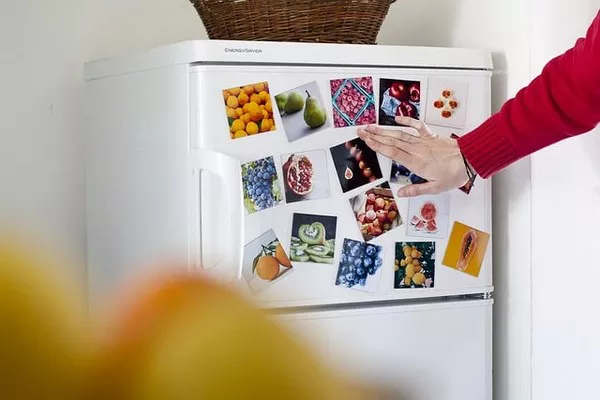In the realm of refrigeration systems, where temperature control is critical for various industrial, commercial, and residential applications, the evaporator plays a pivotal role. It is a fundamental component that facilitates the cooling process by absorbing heat from its surroundings, thereby enabling the refrigerant to transition from liquid to vapor state. This transformation is essential for maintaining the desired temperature within refrigerated spaces or equipment.
Overview of Refrigeration Systems
Before delving into the specifics of evaporators, it’s essential to grasp the basic principles of refrigeration systems. At its core, refrigeration is about transferring heat energy from one location to another, typically from a colder environment (refrigerated space) to a warmer one (outside environment). This process is achieved through the circulation of a refrigerant—a substance capable of absorbing and releasing heat—as it undergoes changes in pressure and temperature.
Key components of a refrigeration system include:
Compressor: Responsible for compressing the refrigerant gas, raising its temperature and pressure.
Condenser: Facilitates the release of heat from the refrigerant to the surroundings, causing it to condense into a liquid state.
Expansion Valve: Regulates the flow of refrigerant into the evaporator and controls its pressure.
Evaporator: Absorbs heat from the refrigerated space, allowing the refrigerant to evaporate and complete the cycle.
The Role of the Evaporator
Among these components, the evaporator stands out for its direct interaction with the space being cooled. Its primary function is to absorb heat from the surroundings, thereby lowering the temperature within the refrigerated area. This cooling effect is achieved through the evaporation of the refrigerant, which absorbs thermal energy from the environment.
Types of Evaporators
Evaporators come in various types, each suited to different refrigeration applications based on factors such as cooling capacity, efficiency, and space constraints. Some common types include:
Finned Tube Evaporators: Utilized in air conditioning systems and refrigeration units, these consist of a network of tubes with external fins that enhance heat transfer.
Plate Evaporators: Found in compact refrigeration units and some industrial applications, these involve refrigerant flowing through a series of plates to exchange heat.
Shell and Tube Evaporators: Typically used in larger industrial applications, these consist of tubes through which refrigerant flows while the surrounding space is cooled by a fluid circulating in a shell around the tubes.
Coil-in-Box Evaporators: These are compact evaporators commonly used in refrigerators and freezers, where coils containing refrigerant are placed within the insulated box to absorb heat.
Evaporator Operation
The operation of an evaporator hinges on the thermodynamic properties of the refrigerant and the principles of heat transfer. Here’s a step-by-step breakdown of how an evaporator functions:
Refrigerant Expansion: After being compressed and cooled in the condenser, the high-pressure liquid refrigerant passes through the expansion valve. This valve reduces its pressure abruptly, causing a drop in temperature as it enters the evaporator.
Heat Absorption: As the cold refrigerant flows through the evaporator coils or plates, it encounters warmer air or fluid from the refrigerated space. Heat from the surroundings is absorbed by the refrigerant, causing it to evaporate and turn into a low-pressure vapor.
Cooling Effect: The evaporation process extracts heat from the refrigerated space, thereby lowering its temperature to the desired level. This cooled air or fluid is then circulated back into the space being refrigerated.
Refrigerant Return: The low-pressure vaporized refrigerant exits the evaporator and returns to the compressor, completing the refrigeration cycle.
Factors Influencing Evaporator Design and Performance
Several factors influence the design and performance of evaporators in refrigeration systems:
Heat Transfer Surface: The surface area of the evaporator coils or plates determines the rate at which heat can be absorbed.
Refrigerant Flow: The velocity and distribution of refrigerant within the evaporator affect its efficiency in heat transfer.
Temperature Difference: The temperature differential between the refrigerant and the surroundings impacts the rate of heat absorption.
Operating Conditions: Factors such as ambient temperature, humidity levels, and load variations influence the overall performance and efficiency of the evaporator.
Efficiency and Energy Considerations
Efficient operation of evaporators is crucial for minimizing energy consumption and optimizing cooling performance. Several strategies enhance evaporator efficiency:
Proper Sizing: Ensuring the evaporator matches the cooling load requirements of the refrigerated space avoids unnecessary energy consumption.
Heat Exchanger Design: Optimal design of heat transfer surfaces and configurations improves heat exchange efficiency.
Defrosting Mechanisms: In systems prone to frost buildup, periodic defrosting cycles prevent inefficiencies caused by insulating ice layers on evaporator surfaces.
Applications Across Industries
Evaporators find extensive application across various industries and sectors:
Food Preservation: Refrigerators and freezers in residential and commercial settings utilize evaporators to maintain food freshness and safety.
HVAC Systems: Air conditioning units employ evaporators to cool and dehumidify indoor air for comfort and air quality control.
Industrial Refrigeration: Large-scale refrigeration systems in food processing, pharmaceuticals, and chemical industries rely on evaporators for temperature control and product preservation.
Cold Storage Facilities: Evaporators are integral to maintaining low temperatures in warehouses and storage facilities for perishable goods.
Advances in Evaporator Technology
Advancements in materials science, manufacturing techniques, and refrigerant technology continue to drive improvements in evaporator design and performance:
Microchannel Evaporators: Compact designs with enhanced surface area for improved heat transfer efficiency.
Variable Refrigerant Flow (VRF) Systems: Adaptive systems that adjust refrigerant flow rates to match varying cooling demands, optimizing energy efficiency.
Advanced Coatings: Coatings on evaporator surfaces to enhance heat transfer and reduce fouling or corrosion.
See Also 4 MAIN COMPONENTS OF A REFRIGERATION SYSTEM
Conclusion
In conclusion, evaporators are indispensable components in refrigeration systems, playing a crucial role in maintaining controlled temperatures for a wide range of applications. Their ability to absorb heat through the evaporation of refrigerants forms the cornerstone of modern cooling technology. As industries and consumers alike continue to demand efficient and sustainable cooling solutions, ongoing research and innovation in evaporator technology will undoubtedly shape the future of refrigeration systems. Understanding the principles and functions of evaporators is essential for optimizing their performance and ensuring reliable operation in diverse environmental conditions.

